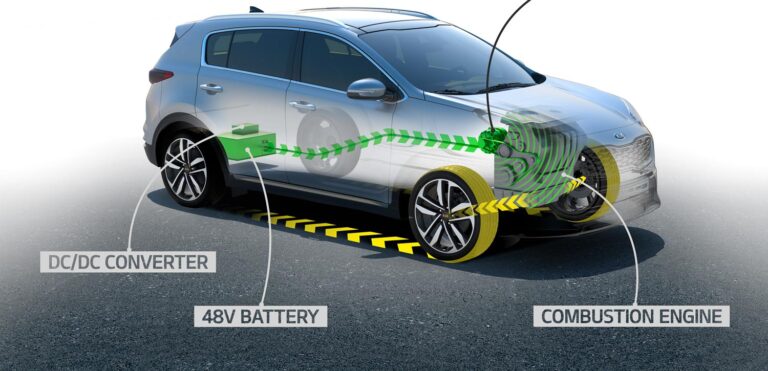A number of new Kia models will get the option of a starter-generator and an additional 48V battery to boost the 2.0-liter diesel engine and recuperate kinetic energy. The facelifted Sportage, which will go on sale later this year, is the first model to benefit from the system, but other models, including gasoline variants, will get it as well.
The facelifted Kia Sportage also gains a new 1.6 diesel engine, available in 115hp or 136hp variants, to replace the old 1.7 CRDi. The more powerful 1.6 CRDi is available with all-wheel drive and a seven-speed double-clutch transmission.
Next year will see the launch of the third-generation Ceed (now without apostrophe!), which will also feature the 1.6 diesel and the mild hybrid 2.0 diesel. All engines comply with Euro 6d TEMP emissions standards.
The mild hybrid system consists of a 0.46kWh 48V lithium-ion battery and a combined starter-generator, which can switch between motor and generator modes. It is connected with a belt to the engine’s crankshaft to provide up to 10kW (13.6hp) of electric assistance to the powertrain in ‘motor’ mode.
In generator mode, it harvests kinetic energy from the vehicle during in-gear deceleration and braking to charge the batteries. Kia claims a 4% reduction in CO2 emissions for manual transmission models under the WLTP cycle.
Battery power also allows stop-start to happen on the move. If the battery has sufficient charge, the combustion engine turns off automatically during in-gear deceleration and braking. The starter-generator can then seamlessly restart the engine when the driver presses the throttle pedal.
Kia says the integration into the existing vehicle architecture was relatively straightforward, as the hardware is fairly compact. Depending on the vehicle, the 48V battery is housed underneath the trunk floor, minimally affecting practicality.
The 48V battery’s DC/DC converter enables the new battery to connect to the vehicle’s onboard power supply, leading to a significant reduction in the size of the regular 12V battery required to power the car’s ancillary electronics.
There is still a conventional starter motor for cold starts at low temperatures, although it is smaller than before, as charge from the 48V battery helps to start the engine in most conditions.
The mild hybrid system is currently compatible with both manual and automatic transmissions, and could be adapted for front-, rear- and all-wheel drivetrain layouts. The powertrain will also be adapted for use in petrol engines.


